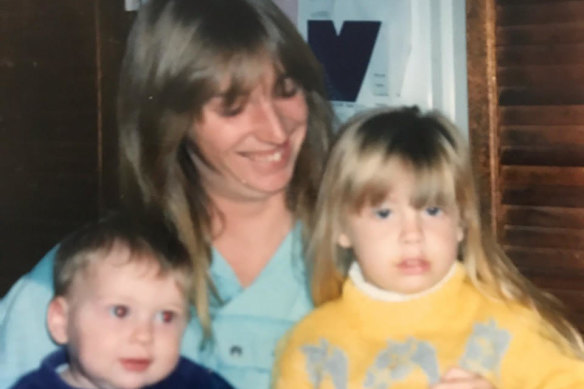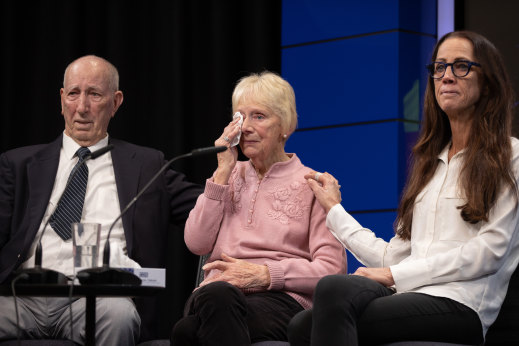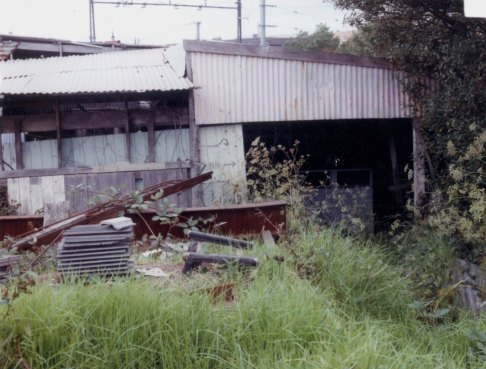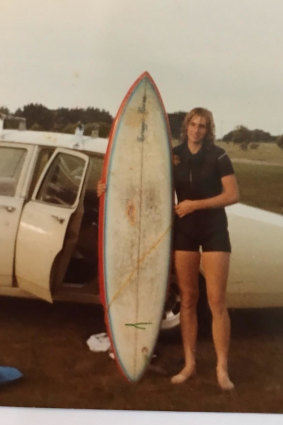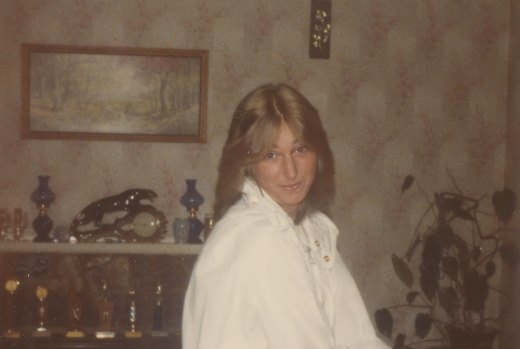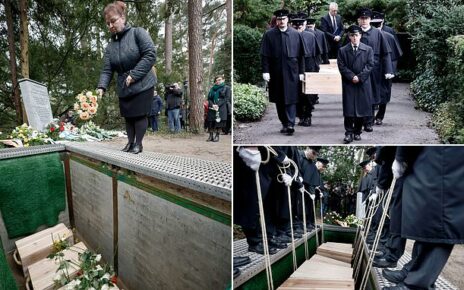It was an innocent slip that simultaneously ruptured the right cruciate ligament and a young woman’s dreams. Michele Brown had been a champion netballer in a sports-mad family. Now she was an ex-champion.
A member of the Victoria under-17 side she was in the squad to be selected for the Australian Institute of Sport. The knee injury robbed her of her sporting ambitions and also her drive and direction. Her bright future slowly grew bleak.
Michele Brown, who was murdered in Frankston in 1992.
“It changed her life,” says her sister, Simone Kapiteyn. It was at a time when knee operations were more of a gamble, and she chose not to undergo surgery.
Michele was one of four sisters who all played netball. Eventually, her mother, Jeanette, father, Bert, and brother, David, joined in to form their own family team. At 79, Jeanette still plays walking netball.
Weekends were spent piling into two family cars and heading from game to game. If Michele had spare time she spent it in the ocean chasing her other passion – surfing.
But with a bung knee, Michele drifted from her sporty social group to the wrong side of town, associating with Frankston locals who lived on the fringe, dabbling in drugs and small-time crime.
Michele Brown’s parents, Bert and Jeanette Brown, and sister Simone Kapiteyn.Credit:Simon Schulter
By this time Simone had joined the police force and was stationed at Frankston. She knew some of Michele’s new “friends” professionally, but her sister, 18 months older than her and now in her 20s, was entitled to make her own life choices.
The family did what good families do. They hung in, believing Michele, who remained, loyal, loving and caring, would come through this rough spot and stabilise her life, but she was robbed of that chance.
On March 1, 1992, she went missing. It was her 25th birthday. Her body was found on March 14 in a disused shed at the back of a gun shop in Playne Street, Frankston.
The shed where Michele Brown’s body was found.Credit:Victoria Police
There are more than 200 unsolved murders on the Victoria Police books. At any one time, six are selected to be re-investigated by the Cold Case Homicide Unit.
It is labour-intensive work; a new investigation can take years. Most police departments don’t bother, and if a case can’t be solved in days they park it, unless a breakthrough presents itself.
The head of the unit, Detective Senior Sergeant Paul Scarlett, says the unsolved cases are examined, and those selected for a “deep dive” re-investigation are the ones considered solvable because of new information or the potential for modern forensics to unearth new clues.
Michele Brown had a passion for surfing.
And there is another key component. People change, alibis breakdown and old loyalties crumble.
Such as the case of James Russouw, 24, murdered in an East Burwood Reserve in 2008.
Eight years later, in what was considered the last roll of the dice, police announced a $1 million reward and released a short clip of CCTV footage that showed a man in a public phone box who phoned Russouw from the East Burwood Kmart, about one kilometre from the murder scene.
The quality was so poor it wasn’t considered vital, but within two days a caller to Crime Stoppers claimed the man walking from the phone box was Christopher John Lavery, who – like Russouw – was a former Whitefriars College student.
The caller, who also went to the same school, recognised Lavery’s gait and his habit of wearing ill-fitting pants. A check of the file showed Lavery had an alibi claiming he had been at a movie with a mate. When police re-interviewed the mate he quickly admitted he had been lying.
In 2017 Lavery was convicted of Russouw’s murder.
The murder of Michelle Buckingham, 16, who disappeared in October 1983 seemed one of those cases destined not remain unsolved – until the Shepparton News partnered with cold case detectives to re-open the file.
Blanket publicity from the local paper in 2012 led to a series of tips from the public. One caller came forward after his conscience was pricked by the photo of Michelle’s mother, Elvira, in the paper.
He said his brother-in-law Steven Bradley had confessed to the murder.
According to the informer, Norman Gribble, the day after Michelle was murdered a distressed Bradley confessed he had killed her.
Bradley told Gribble he and “mates” Rodney Butler and Trevor Corrigan went to the caravan park where they picked up Michelle.
In May 2014 he was charged, extradited from Brisbane, and eventually convicted and sentenced to 27 years with a minimum of 21.
Scarlett says when police announce a re-investigation it gives potential witnesses a chance to reflect on what happened and consider finally telling the truth.
“It can draw people out who have not previously come forward,” he says.
It is a little like a modern Formula One driver racing against a Jack Brabham special.
Cold case detectives have to develop a different mindset than the present-day homicide investigator. In the modern era, the detectives usually have a crime scene, phone records, CCTV data, modern DNA technology and credit card footprints.
In a cold case, the detectives have a musty file, police and coronial records and often not much else. It is a little like a modern Formula One driver racing against a Jack Brabham special.
While DNA has helped solve old cases, exhibits were handled differently decades ago and samples can be compromised. And not all lines of inquiry were documented. Sometimes if a suspect provided a corroborated alibi they would be written out of the case without comprehensive notes.
This is gumshoe work. Strip the case back, hit the files and find the witnesses. Talk to them again and again. Is there anything they forgot? Is there anything on their minds they now wish to share?
Senior detective Jodie Stoll has been in homicide for four years, and is now investigating the Michele Brown case. “It is a different process,” she says. “You have to be prepared to be patient.”
In the Brown case police have announced $1 million-dollar reward and the possibility of immunity for a co-offender who comes forward with the truth. The brutal truth is someone in the know could clear their conscience and their debts in one go.
First the facts. On March 1, 1992, Michele Brown left her family home in Baxter about midday and went to Frankston North to visit a friend. After 7pm the pair walked to the FoodPlus store on the Frankston-Dandenong road to buy cigarettes.
Brown borrowed 30 cents from her friend to ring home to ask her mother for a lift home, to pick her up at the agreed spot behind the railway station and the bus hub. Her brother answered the phone and later told police she sounded intoxicated. When her mother arrived Michele was not there. This was unusual, although she would stay away from home for days at a time.
Jeanette began to make enquiries with her daughter’s friends. When they told her they had not heard from Michele and as she had not been in contact asking for money, she reported her missing.
On March 14, a worker at the gun shop noticed an odd smell at the shed and discovered the body. The shed was on the Frankston railway line about 300 metres from where Michele had wanted to be picked up.
She was found naked, face down with clothes next to her.
She had previously gone to the shed to use drugs, which is one of the reasons police believe she was killed by a person, or people, she knew.
A friend told police she received a phone call from Michele from near the railway station about 8pm, and said someone saw her and was pulling up.
It was 10 minutes before her mother was due to arrive.
Two Playne Street residents reported hearing two screams at 9pm, followed by silence.
The group of people who associated with Michele Brown were unable or unwilling to help the initial homicide investigation, which was hardly surprising as many of them saw the police as enemies.
Police believe Michele probably knew her killer or killers, and that more than one person knows what happened in that shed 30 years ago.
But many of them would now be in their mid-50s and would have left that world behind.
Police believe she probably knew her killer, or killers, and that more than one person knows what happened in that shed 30 years ago.
Scarlett says cold cases can be solved by just one phone call. “Anyone with any information, no matter how small, should contact us,” he says.
It may be something that has nagged at the conscience, or as Stoll says, “There are now one million reasons to come forward.”
Michele Brown’s sister, Simone Kapiteyn, spent 24 years in the Victoria and WA police forces dealing with criminals and victims. She saw people spinning out of control and people who came through dark times.
“[My sister] fell in with the wrong crowd, made some poor choices and dabbled in drugs but should never have been forced to pay the ultimate price,” Kapiteyn says.
“We have always believed this is solvable and there are people who know what happened. No parents should have to live without knowing what happened to one of their children.
“If there were answers 30 years later it would give them some level of peace.”
The best of Good Weekend delivered to your inbox every Saturday morning. Sign up here.
Most Viewed in National
From our partners
Source: Read Full Article
